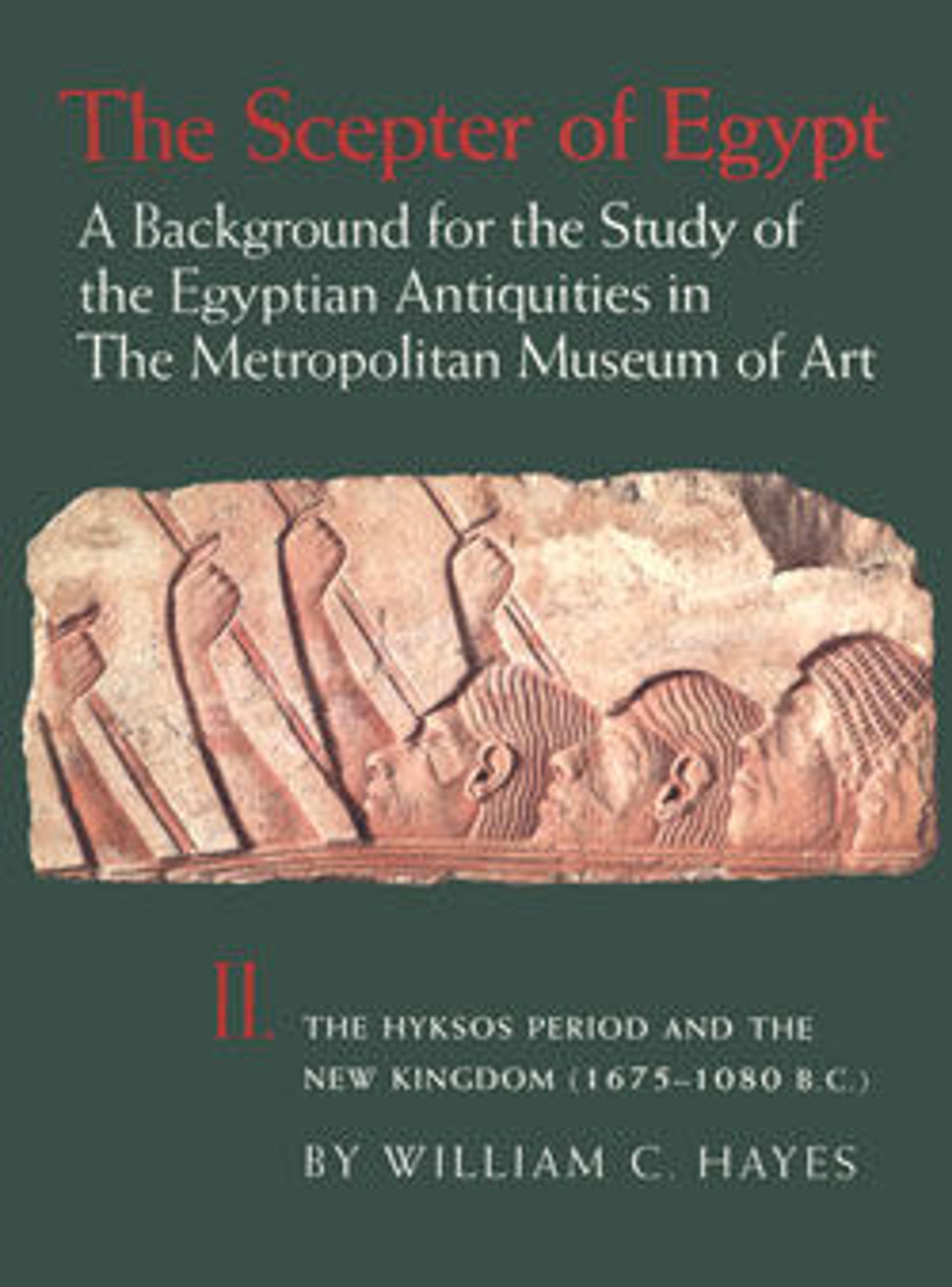Coffin of Ahmose
The rishi coffin of the Second Intermediate Period (see for example 30.3.4a, b) gave way in the early New Kingdom to the type seen here, an anthropoid coffin made of large planks, coated with stucco and painted white. Two long vertical bands run down the center of the lid, and transverse bands wrap around lid and trough. These bands represent the tapes that bound the outer layers of linen wrappings around the body, identifying the coffin with the mummy and thus as an additional repository for the intangible aspects of the person thought to survive death. The bands are also thought to echo the architectural features seen on earlier rectangular coffins (see 32.3.429a, b) that characterize the coffin as the eternal dwelling place of the deceased.
This coffin was inscribed for Ahmose, son of the Lady of the House, Nakht. Strapped to his chin is the long, curved beard of divinity, around his shoulders is a broad collar with falcon-head terminals, and on his chest is a winged vulture. The amuletic wedjat eyes seen on earlier coffins are translated here into single large eyes in panels on either side of the box. On the sides of the coffin are the members of Ahmose's family, here to pay their eternal respects. To the right his wife Hapu and daughter, also named Ahmose, raise their arms in gestures of mourning; behind the women are two sons, Djehuty and Mekyniwetef. Hapu appears again to the left, this time with a different daughter, Tet, and two sons, Nebseny and Siamun. On the foot end are figures of the goddesses Isis and Nephthys, along with a male offering bearer. The long bands on the lid are also used to carry offering prayers for the benefit of Ahmose: one calls on the mortuary god Osiris, like many such prayers; the other is more unusual in that it invokes the great state god of the New Kingdom, Amun-Re.
This coffin was inscribed for Ahmose, son of the Lady of the House, Nakht. Strapped to his chin is the long, curved beard of divinity, around his shoulders is a broad collar with falcon-head terminals, and on his chest is a winged vulture. The amuletic wedjat eyes seen on earlier coffins are translated here into single large eyes in panels on either side of the box. On the sides of the coffin are the members of Ahmose's family, here to pay their eternal respects. To the right his wife Hapu and daughter, also named Ahmose, raise their arms in gestures of mourning; behind the women are two sons, Djehuty and Mekyniwetef. Hapu appears again to the left, this time with a different daughter, Tet, and two sons, Nebseny and Siamun. On the foot end are figures of the goddesses Isis and Nephthys, along with a male offering bearer. The long bands on the lid are also used to carry offering prayers for the benefit of Ahmose: one calls on the mortuary god Osiris, like many such prayers; the other is more unusual in that it invokes the great state god of the New Kingdom, Amun-Re.
Artwork Details
- Title:Coffin of Ahmose
- Period:New Kingdom
- Dynasty:early Dynasty 18
- Reign:reign of Ahmose I to Hatshepsut
- Date:ca. 1550–1458 B.C.
- Geography:From Egypt, Upper Egypt, Thebes, Asasif, probably Tomb CC 64, burial 9, Carnarvon Excavations 1907–1914
- Medium:Sycomore wood, stucco, paint
- Dimensions:L. 229 cm (90 3/16 in); h. 60 cm (23 5/8 in)
- Credit Line:Gift of the Earl of Carnarvon, 1914
- Object Number:14.10.2a, b
- Curatorial Department: Egyptian Art
More Artwork
Research Resources
The Met provides unparalleled resources for research and welcomes an international community of students and scholars. The Met's Open Access API is where creators and researchers can connect to the The Met collection. Open Access data and public domain images are available for unrestricted commercial and noncommercial use without permission or fee.
To request images under copyright and other restrictions, please use this Image Request form.
Feedback
We continue to research and examine historical and cultural context for objects in The Met collection. If you have comments or questions about this object record, please contact us using the form below. The Museum looks forward to receiving your comments.
